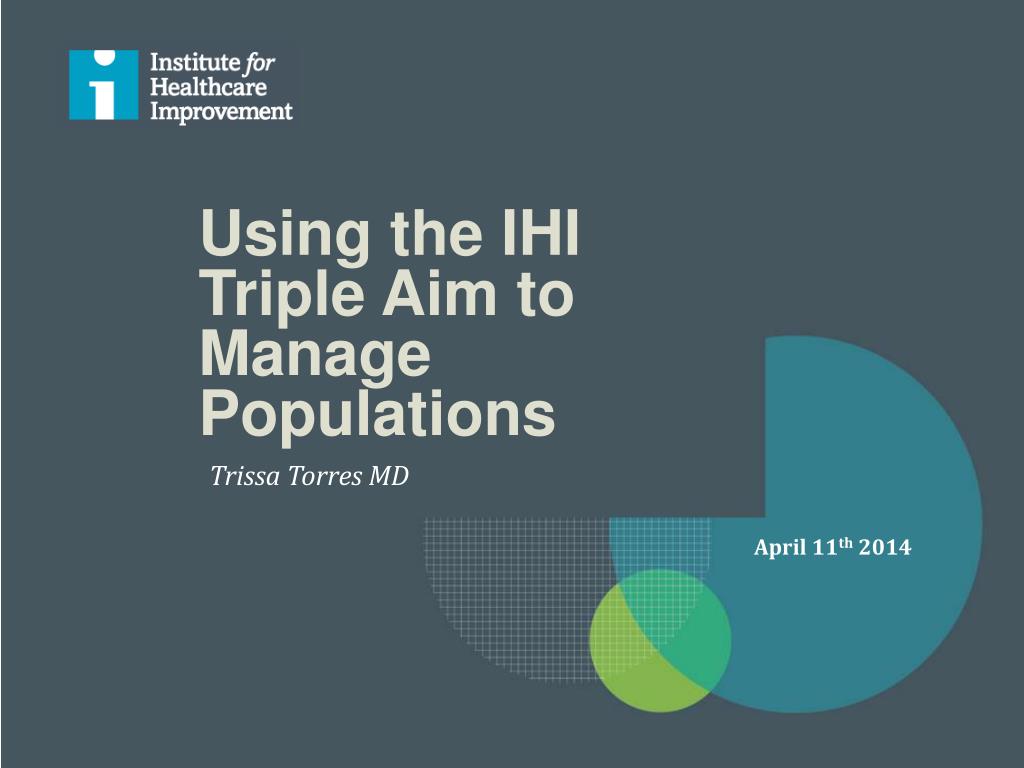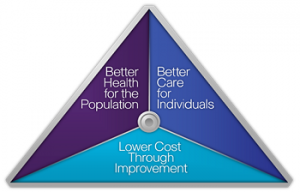

Set by the GDPR Cookie Consent plugin, this cookie is used to record the user consent for the cookies in the "Advertisement" category. These cookies ensure basic functionalities and security features of the website, anonymously. Necessary cookies are absolutely essential for the website to function properly. Keywords: population management, populations, Triple Aim Whittington, Kevin Nolan, Ninon Lewis, and Trissa Torres Even those organizations working on the Triple Aim before IHI coined the term found our concept to be useful because it helped them think about all 3 dimensions at once and organize their work around them.Īuthor(s): John W. By noting the contrasts between the contexts and structures of those sites in the collaborative that progressed and those that did not, we were able to develop an ex post theory of what is needed for an organization or community to successfully pursue the Triple Aim.įindings: Drawing on our 7 years of experience, we describe the 3 major principles that guided the organizations and communities working on the Triple Aim: creating the right foundation for population management, managing services at scale for the population, and establishing a learning system to drive and sustain the work over time.Ĭonclusions: The concept of the Triple Aim is now widely used, because of IHI’s work with many organizations and also because of the adoption of the Triple Aim as part of the national strategy for US health care, developed during the implementation of the Patient Protection and Affordable Care Act of 2010. This collaborative provided a structure for observational research. In addition, key groups outside the health care system were represented, such as public health agencies, social services groups, and community coalitions.

The 141 participating organizations included health care systems, hospitals, health care insurance companies, and others closely tied to health care. Methods: In 2007, IHI began recruiting organizations from around the world to participate in a collaborative to implement what became known as the Triple Aim. Drawing on our 7 years of experience, we describe 3 major principles that guided the organizations and communities working on this endeavor: creating the right foundation for population management, managing services at scale for the population, and establishing a learning system to drive and sustain the work over time.Ĭontext: In 2008, researchers at the Institute for Healthcare Improvement (IHI) described the Triple Aim as simultaneously “improving the individual experience of care improving the health of populations and reducing the per capita costs of care for populations.” IHI and its close colleagues had determined that both individual and societal changes were needed. Since that time, IHI and others have worked together to determine how the implementation of the Triple Aim has progressed.In 2010, the Triple Aim became part of the US national strategy for tackling health care issues, especially in the implementation of the Patient Protection and Affordable Care Act (ACA) of 2010.In 2008, researchers at the Institute for Healthcare Improvement (IHI) proposed the Triple Aim, strategic organizing principles for health care organizations and geographic communities that seek, simultaneously, to improve the individual experience of care and the health of populations and to reduce the per capita costs of care for populations.The Triple Aim Journey: Improving Population Health and Patients’ Experience of Care, While Reducing Costs. Living too long: the current focus of medical research on increasing the quantity, rather than the quality, of life is damaging our health and harming the economy.


Measuring Overall Health System Performance For 191 Countries. Tandon A, Murray CJL, Lauer JA, Evans DB.


 0 kommentar(er)
0 kommentar(er)
